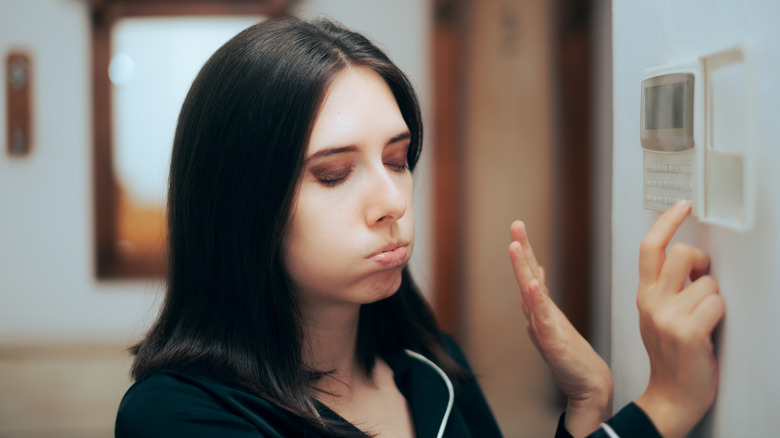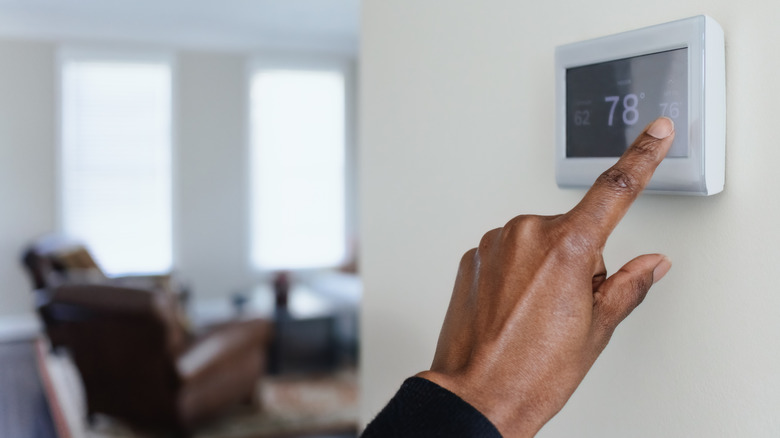The Ideal Thermostat Setting To Make It Through The Brutal Arizona Heat
Arizona summers are no joke — the brutal heat makes it difficult to feel comfortable at home, even when you're trying different thermostat settings. With summer days soaring into triple digits (especially in Yuma and Lake Havasu), finding the right indoor temperature is a matter of comfort, cost, and even health. Choosing the best thermostat setting isn't just about preference; it's a decision that can affect your utility bills and help you avoid a range of health conditions. From heat exhaustion to migraine flare-ups, temperatures over 90°F can cause serious medical issues. According to a recent poll from The Arizona Republic, the best thermostat setting for your home during summer is 78 degrees Fahrenheit.
Even though 78 degrees Fahrenheit might sound like it's too warm to be comfortable, it can reduce the strain on your air conditioning system. Raising your thermostat by 7 to 10 degrees for eight hours a day can save as much as 10% a year on cooling. That reduced strain also helps extend the lifespan of your cooling system and lowers the chance of breakdowns during extreme heat waves, which is especially important in Arizona, where AC units are essential to combat the high levels of heat. Pairing the 78 degrees Fahrenheit setting with energy-smart habits means you stay comfortable without relying on extra fans or costly replacements.
How to get the most from a 78 degrees Fahrenheit thermostat setting
To make 78 degrees Fahrenheit feel as cool and efficient as possible, it's worth pairing your thermostat setting with other energy-smart strategies. Using ceiling or portable fans is a low-cost way to keep your space comfortable; they can make a room feel up to 4 degrees cooler, allowing you to raise your thermostat without sacrificing comfort. During the hottest parts of the day, keep window coverings closed to block sunlight and avoid adding unnecessary heat to your living areas.
It's also a good idea to make sure your thermostat is located in a sensible spot, ideally on an interior wall away from direct sunlight and drafts. Even if you have one of the best smart thermostats for your household (according to reviews), poor placement can still lead to inaccurate temperature readings and higher energy bills. And don't forget the basics: clean your filters regularly and weatherize your home. Sealing air leaks and adding insulation can keep the cool air where you want it, reducing the need to run your AC as often.
When you're away from home, setting your thermostat to around 88 degrees Fahrenheit (as long as it's still safe for pets and houseplants) can save even more energy. Just remember: keeping your home at 78 degrees Fahrenheit is more effective when it's part of a broader energy-efficiency plan that includes other helpful tips to protect your home during a heatwave or during summer, rather than being used as a standalone setting.

